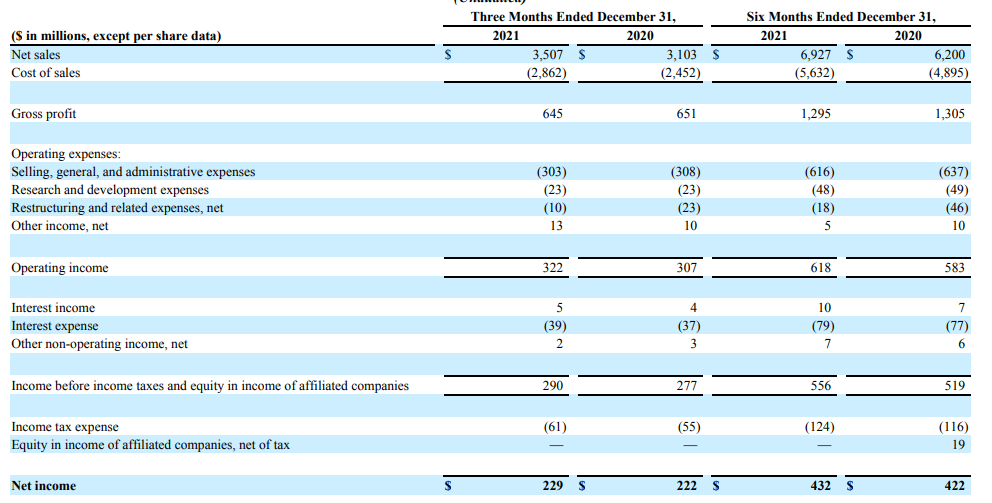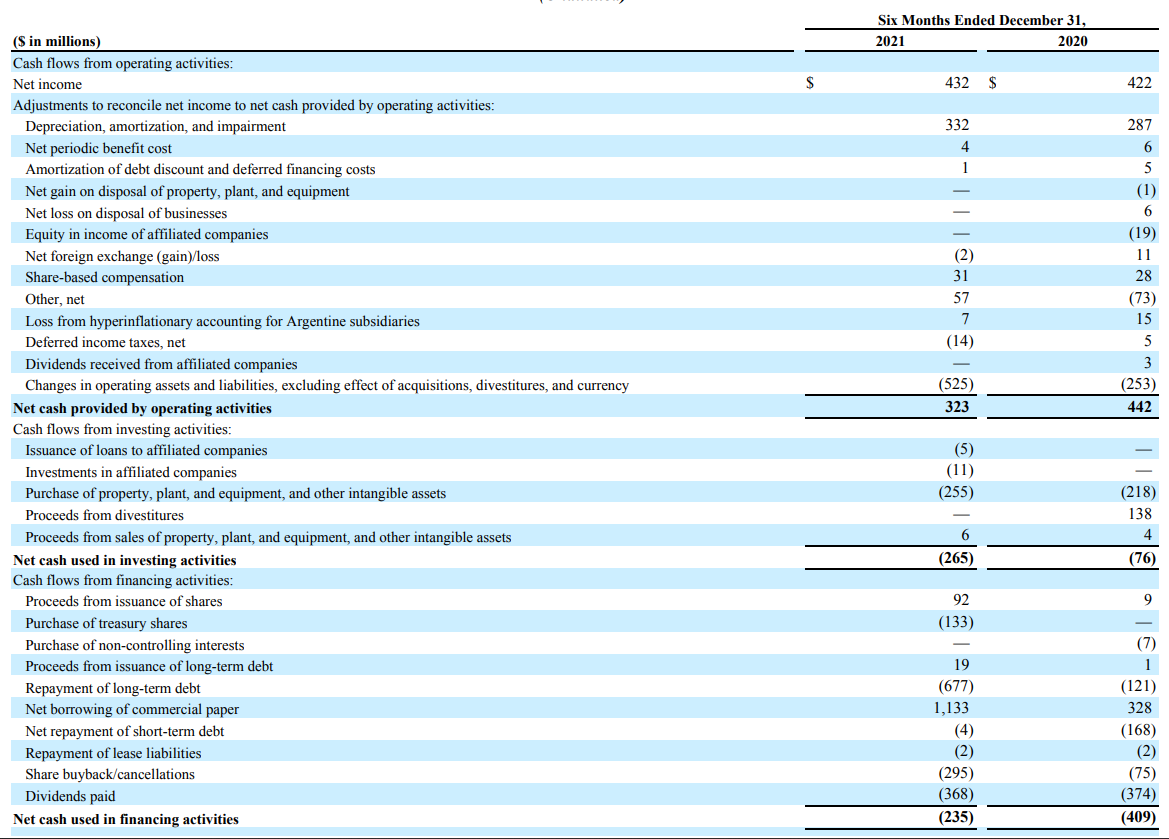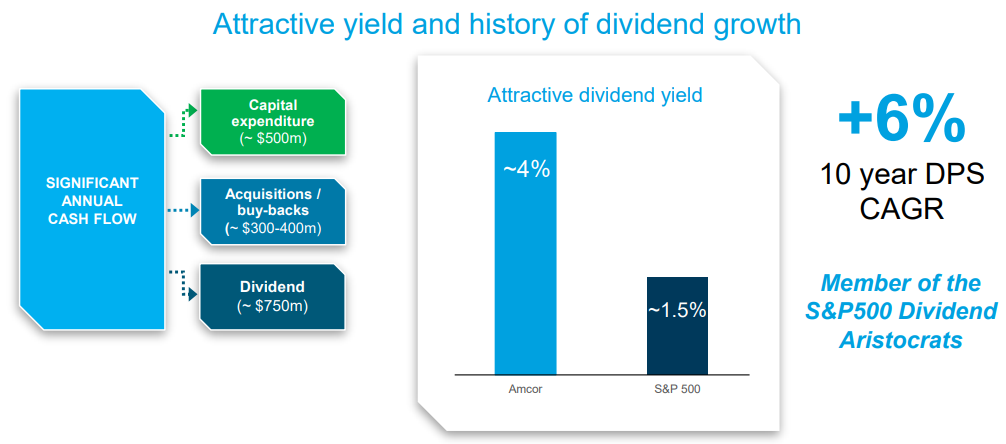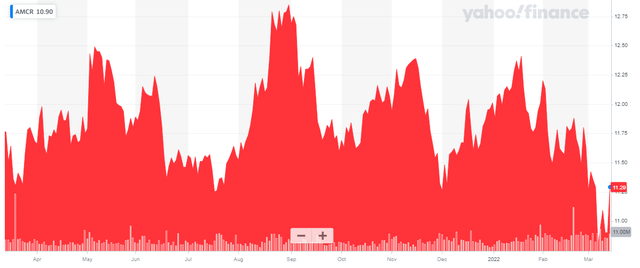NoDerog/iStock Unreleased via Getty Images
Introduction
Amcor’s (NYSE:AMCR) share price is currently trading at almost exactly the same level as a year ago despite a nice double digit share price increase throughout the year. The packaging giant is now dealing with the impact of inflation on its earnings and although it has been able to keep the net income relatively stable, the margins are shrinking as it takes a while before price hikes can absorb the impact of higher raw material costs.
The revenue is increasing fast, but the margins are contracting
The company’s financial year ends in June, which means the most recent results published by the company are covering the first semester of FY 2022, ending in December. The total revenue increased to in excess of $6.9B in 2021 but as the COGS increased at a faster pace, the gross profit actually decreased. Whereas Amcor generated a gross profit of $1.3B on a $6.2B revenue in 2020, the gross profit was just around $1.295B resulting in a gross margin of 18.7%. That still sounds good, but it is a noticeable decrease compared to the gross margin in the first half of FY 2021.
Amcor Investor Relations
The situation was a bit worse in the second quarter with a gross margin of just 18.40%, but Amcor also saw a reduction in its SG&A expenses and the restructuring expenses and these elements helped Amcor to report a small increase in the operating income in both Q2 as well as H1 2021. The net interest expenses are decreasing as well, and Amcor reported a net income attributable to the Amcor shareholders of $427M which is $0.28 per share. That’s a small increase compared to the same period in the previous financial year but it’s clear the improvement was mainly fueled by a lower restructuring expenses.
Fortunately, Amcor’s capital expenditures tend to be lower than the depreciation and amortization expenses which usually boosts the free cash flow result to a level higher than the reported net income.
In H1 FY 2022, Amcor reported an operating cash flow of $323M but this includes a $525M investment in the working capital and excludes $2M in lease payments. On an adjusted basis, the operating cash flow in the first semester was approximately $846M. And with a total capex of $255M, the underlying free cash flow result was $591M.
Amcor Investor Relations
That’s higher than the reported net income thanks to the $80M difference between the depreciation and amortization expenses and the effective capex needs. Additionally, the income statement included $31M in non-cash share-based compensation as well.
What does this mean for the dividend?
Amcor is currently paying a quarterly dividend of $0.12 per share, which results in a current dividend yield of approximately 4.4%. That’s very appealing and the dividend yield is fully covered by both the earnings as well as the underlying free cash flow. Based on the current share count, the total free cash flow per share in the first semester of the current financial year was approximately $0.39 which means the payout ratio is just over 6%.
Amcor also continues to buy back its own shares and in the past six months the company has spent in excess of $400M on buying back and cancelling its own shares. In the first half of the financial year, the company repurchased 25M of its own shares while the treasury purchased an additional 11 million shares to compensate for the exercise of stock options.
Amcor Investor Relations
This means the current net share count has decreased from 1.56B shares as of the end of June 2020 to just 1.51B shares right now as Amcor has repurchased 4% of its share count. This reduces the cash need to cover its dividend (the quarterly dividend is now costing the company just over $180M per quarter) and the continuous repurchase and cancellation plan will allow Amcor to hike its quarterly dividend without seeing its cash outflow increase.
Amcor Investor Relations
Investment thesis
So while Amcor doesn’t appear to be cheap given the EPS performance, income-oriented shareholders shouldn’t worry about the dividend as it still is handsomely covered by both the earnings and the free cash flow. Amcor uses its excess free cash flow to buy back its shares which will further improve the coverage ratio of the dividend.
I currently don’t have a long position in Amcor but I’m keeping an eye on the option premiums to take advantage of the higher volatility levels while waiting for Amcor to pass on its higher operating expenses to its customers.



Be the first to comment